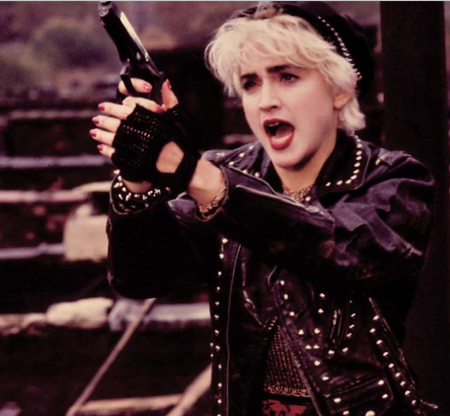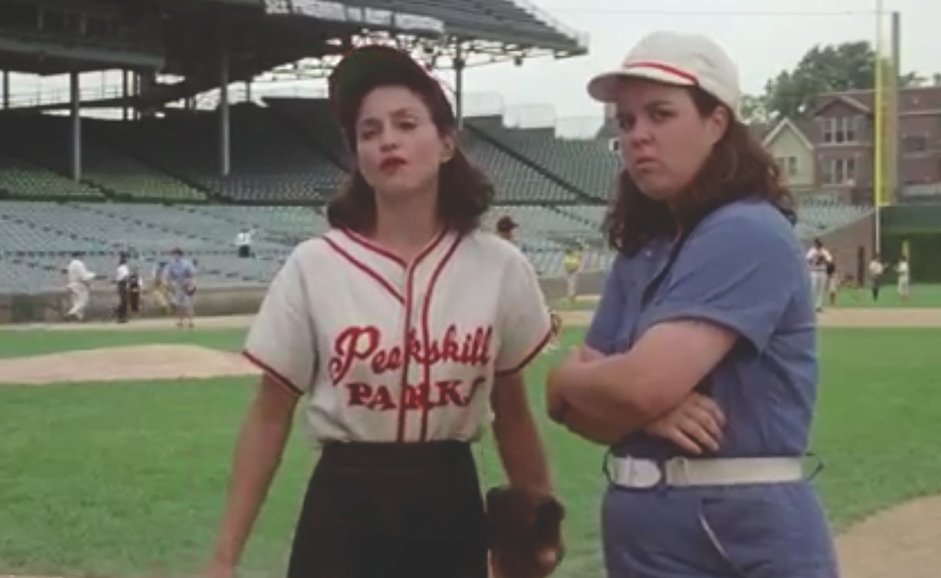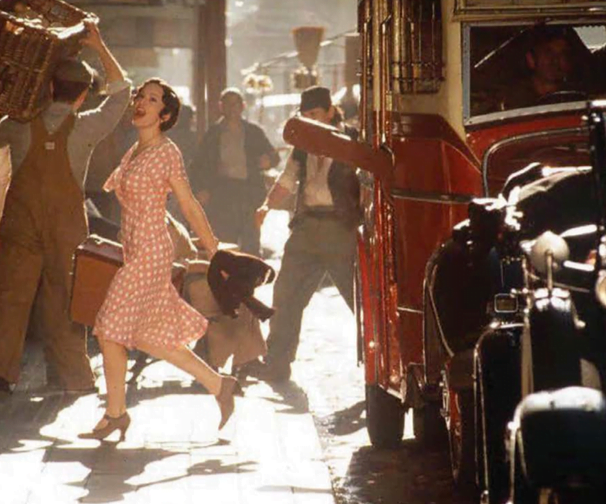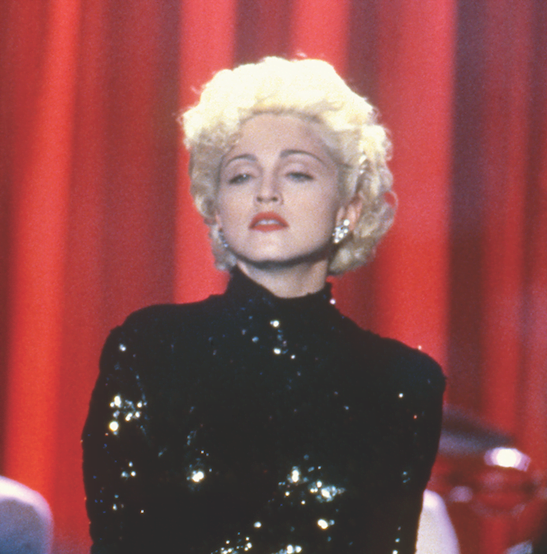She’s occupied both ends of the cinematic scale and been on both sides of the camera lens. From Golden Globe-winning triumphs and regal biopics to disastrous remakes and rom-com bombs, we survey the highs and lows of Madonna’s on-screen activity… Written by Rik Flynn.
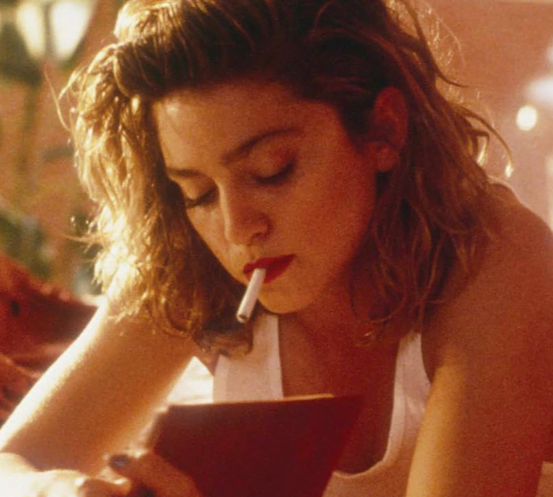
Aside from her 13 studio albums and mammoth touring schedule, humanitarian work and general extra-curricular activities, Madonna has somehow found time to add just short of 30 full-length feature films to her on-screen CV. In fact, there have been very few years in her career thus far in which she hasn’t been involved in a movie in some way or other. And while she invariably divides both critical and audience opinion, it goes without saying that even the finest stock Hollywood has to offer has felt the sharp end of the critic’s pen at some point or other – and by no means all said A-listers have been vindicated with a Golden Globe. Still, notwithstanding her successes on screen, Madonna seems perpetually imprisoned by – and denigrated for – her failures. In many cases, she’s forced to carry the can for an entire production’s failure, regardless of her role within it. In reality, when appointed to the right role, she’s an actor who can shine. And in one particular case she had some pretty big shoes to fill…
It’s telling that Madonna’s aspirations towards film stardom were by no means a late addition to her portfolio. In fact, her first starring role was very early on in her career and ran in tandem with her music. Released in 1985 (but filmed far earlier in 1979), A Certain Sacrifice was a gritty low-budget independent shot on Super 8, and one from which Madge took home a mere $100 to cover her rent. She would come to regret her participation in that particular roughshod indie, likely in part down to the treatment of the film’s sexual content (and the brutal rape scene). When the film was eventually released – no doubt a deliberate move to capitalise on her fame in the wake of second album Like A Virgin – she attempted to buy out the director, Stephen Jon Lewicki. When he declined, she tried (without success) to get the film banned. She aired her indignation in no uncertain terms as she exited a pre-release screening.
Even so, her resolute ambition to someday walk the red carpet was plain to see. Turn back the clock to the end of the Seventies and the young New Yorker was desperate to land a role. She had written a three-page letter to Lewicki in response to his newspaper ad scouring the city for a female lead: “I was born and raised in Detroit, Michigan where I began my career in petulance and precociousness,” it began, offering a chucklesome glimpse into the character we’d all come to know inside-out. “By the time I was in the fifth grade, I knew I either wanted to be a nun or a movie star. Nine months in a convent cured me of the first disease.” It’s a revealing read.
A brief cameo as a club singer in rite-of-passage movie Vision Quest (Crazy For You in the UK) followed, but her first taste of real success came later in the year when she landed her first major role in the Eighties classic Desperately Seeking Susan. Co-star Rosanna Arquette was cast as a bored housewife who becomes obsessed with a grifter named Susan, a felicitous role for Madonna. Not only did the film introduce her acting potential to the world, but it also brought pop masterstroke Into The Groove to its ears. Desperately Seeking Susan took almost $30 million at the box office and made it into The New York Times’ Top 10 films of 1985. Not bad for a rookie.
The following year came the George Harrison-produced flop Shanghai Surprise, notable only for the fact that Madonna stars opposite newly-wed sweetheart Sean Penn. Billboard described her performance as “unbearable”; the less said, the better. Moving swiftly on to an item of far greater interest to movie fans, the screwball comedy Who’s That Girl, despite failure at the box office, was a vast improvement. With Madonna cast as a streetwise delinquent, it proved once again that the singer had a flair for comedy timing – albeit without the captivating naivety seen in Desperately Seeking Susan.
Madonna was singled out by The New York Times as one of the film’s saving graces, even though the majority of critics turned their noses up: “The question posed by the film’s title was ‘Who’s that girl?’” said Rolling Stone. “The answer provided by the box-office receipts was, alas, ‘The same one who appeared in Shanghai Surprise and bored us to death’.” Madonna took a Golden Raspberry for Worst Actress yet the soundtrack flew off the shelves, selling over six million copies. In 1989 her upward trajectory was slighted by yet another dud. She received another Razzie nomination for Worst Supporting Actress in the period comedy Bloodhounds On Broadway – a film that cost $4 million but only scraped in $44,000 in ticket sales. Many began to advocate she stick to music and give the movie business a wide berth.
Madonna’s film career is inconsistent, to say the least, and the Nineties were no different. Dick Tracy was a hit to get the decade off to a flying start. Warren Beatty’s adaptation of the Thirties comic strip featured Hollywood heavyweights Al Pacino and Dustin Hoffman, and Madonna herself put in a confident turn as Club Ritz songstress Breathless Mahoney – an embodiment of the quintessential sassy blonde, with a fine stock of suggestive comebacks. The film premiered at the Walt Disney World Resort in Florida and went on to enjoy the third-highest opening weekend figures of the year with well over $160 million taken worldwide. Dick Tracy was nominated for seven Academy Awards, three of which it won. While none went to Madonna per se, her performance was generally well received.
The plaudits continued with the 1991 Blonde Ambition Tour documentary In Bed With Madonna (Truth Or Dare in the States), a cinematic triumph that’s both eye-opening and funny. This pop-umentary offered a candid glimpse at behind the scenes operations on the road with one of the world’s most celebrated pop stars. It became, at that point, the highest-grossing documentary of all time, and further prompted some to suggest that Madonna’s best role was in fact that of Madonna.
Woody Allen’s Shadows And Fog did nothing to change their minds. Brooding, claustrophobic and shot in black and white, this Kafkaesque neo-film noir depicted the search for a murderer over a single night. Filmed on the largest set ever built in New York, it boasted an equally sizeable cast that included such names as John Cusack, Jodie Foster, Mia Farrow, Lily Tomlin, John Malkovich and Allen himself. Alas, size isn’t everything and unlike much of Allen’s output, the film proved to be a little too arduous for most.
Something more light-hearted was required, and 1992’s baseball comedy A League Of Their Own was just the ticket. It also revealed Madonna could stand up to any one of her big name co-stars – Tom Hanks, Geena Davis and Lori Petty. From home run to universal ridicule, the erotic misfire Body Of Evidence that followed, complete with cringe-worthy candle wax sex scene, was nominated for no less than six Golden Raspberries (Madonna won Worst Actress).
Experimental film-within-a-film Dangerous Game – a co-billing with Harvey Keitel and James Rosso – was cued up next to try and recover what was left of Madonna’s reputation. Perhaps it was fear of further ridicule that got the better of her, but having seen the final cut she didn’t attend the premiere, and bad-mouthed the film pre-release. Director Abel Ferrara blamed her for its failure; “Madonna killed it,” he commented. Yet another lemon for the list, and perhaps the reason why two non-committal roles followed: a singing telegram girl in comedy Blue In The Face and a bit part in Spike Lee’s Girl 6.
Despite this run of box office mediocrity, Madonna’s dream role was just around the corner. When word reached her camp that a cinematic recreation of Tim Rice and Andrew Lloyd Webber’s epic musical Evita was in the offing, she was quick to act. She put pen to paper yet again in an eight-page letter that assured her suitability to director Alan Parker. “Madonna promised me from the very beginning she would give her all,” said Parker. “And she has kept her promise.” It was a role she was born to play, perhaps because, as two powerful women, they both possessed a strong sense of aesthetics and an irresistible charm.
It seems Parker had been right to have faith where others would not. Despite protests in Argentina that Evita would tarnish Perón’s almost saint-like image, it was Madonna who made the breakthrough. After several failed attempts to gain permission to film on the iconic balcony in Buenos Aires’ Plaza De Mayo, it was she who managed to persuade the Argentinian president. “I think up until that point, all he had to go on was hearsay,” she told Roger Ebert. “The stage version of the musical portrays a very one-dimensional version of her. It doesn’t show her in a very humane way; it doesn’t show any vulnerability, it doesn’t explain her past. Alan Parker had the chance to do that in a movie, and I explained that to the president.”
With relentless negative press and constant protests overshadowing the film, Madonna made sure her groundwork was thorough. “An Argentinian journalist whom I met in London has agreed to meet me in [Buenos Aires] and arrange interviews with people who knew or worked with Eva, as well as some anti-Perónists,” she wrote in Vanity Fair. “Most are very old and I’m sure a good number will be suspicious of me. I can hardly blame them if the me they know is the one they’ve read about in newspapers. I am prepared to disarm all and get them to share their deepest, darkest secrets about Eva.”
Aside from interviews, meeting historians and immersing herself in Eva’s life, Madonna even went as far as trying Eva’s favourite meal and visiting her grave. She took two years away from music to focus on the role, and it showed. “I’m in a state of shock,” she wrote when filming was over. “I think it will take me months to recover and a very long time before I’m able to digest all that has happened to me these past five months… My life will never be the same.”
Eva Perón was without doubt a defining role for Madonna and it would go a long way to restoring the public’s opinion of her abilities. “It’s a relief to say that Alan Parker’s film… is pretty damn fine, well cast and handsomely visualised. Madonna once again confounds our expectations,” wrote Time magazine. “Love or hate Madonna-Eva, she is a magnet for the eyes.” Evita grossed $141 million worldwide, far exceeding its budget, and Madonna bagged a Golden Globe for Best Actress.
Evita – Dream Or Nightmare?
Evita was fated to be – quite literally – a bumpy ride. Firstly, huge crowds of screaming fans shadowed Madonna’s every move – “I have bone-crushing entrances and exits whenever I go out,” she declared in a revealing diary commissioned by Vanity Fair. As a result, she referred to her hotel room as “my prison cell” and chose to sleep in a smaller room on the floor above to avoid the constant noise outside her suite.
To add to that, just as filming commenced, she fell pregnant. While some keen-eyed cinema-goers noticed the odd change from scene to scene, she got away with it. Regardless, pregnancy was the least of her worries: the protesters were everywhere. On the way to her hotel she’d spied vicious graffiti: “Evita lives, get out, Madonna”. The world’s press was relentlessly negative throughout, and the local papers supported the Perónist protesters. “I’ve got to stop reading the papers,” she stated. “I am portrayed either as a stupid c*** who doesn’t deserve to play Santa Evita or a spoiled American movie star who has no interest in the truth… I sometimes think my phones are tapped, and wonder if every employee in this hotel is on the take,” she went on. “There are camera lenses trained on me at every window.” She even mentions that certain factions of the Argentinian press tried to frame her for murder in a staged car accident.
When many would throw in the towel, Madonna was unshakable. “None of this discourages me,” she declared defiantly. In reality, Madonna’s laborious research and all-round dedication to learning everything there was to know about Eva Perón meant that, by the time filming began, she probably knew more about her quarry than the majority of her detractors.
On March 20th 1996 Madonna finally stepped out onto the infamous balcony of the Casa Rosada in front of thousands of people and sang Don’t Cry For Me Argentina. “I raised my arms and looked into the hungry eyes of humanity, and at that moment I felt [Eva] enter my body like a heat missile, starting with my feet, travelling up my spine, and flying out my fingertips, into the air, out to the people, and back up to heaven.” Bravo.
From the sublime… to 2000’s comedy-drama The Next Best Thing, a major financial and critical disaster that’s best forgotten – as was an ill-fated project made with husband/director Guy Ritchie, 2002’s horror-show remake Swept Away, a rom-com that has tarnished the star’s credentials ever since. “Striking a pose is not the same as embodying a person, and a role like this one requires the surrender of emotional control, something Madonna seems constitutionally unable to achieve,” came the death toll from The New York Times. Five Golden Raspberries followed.
The Noughties continued with more misfires, a cameo in a Bond film, another documentary, two films (and relative success) as Executive Director and her directorial debut – but for music fans, 2005’s I’m Going To Tell You A Secret was the one. This second documentary followed the Re-Invention World Tour, with her spirituality (Kabbalah) very much in focus. From auditioning dancers through to shows in Israel disrupted by protests, it’s a compelling production.
Next came two projects that occupied polar opposite ends of the spectrum. For 2006 animation Arthur And The Invisibles, Madonna took on the voice of Princess Selenia, before raising awareness about HIV in Malawi via 2008’s I Am Because We Are, a documentary that depicted the lives of orphans in the country. “Madonna the documentary-maker came, saw and conquered the world’s biggest film festival yesterday with a powerful polemic on the effects of disease and poverty on Malawi,” praised The Guardian. Later that year she was in the director’s chair for the first big film production to come out of her Semtex Films company. Despite a cast that included Richard E Grant and several British soap stars, Filth And Wisdom – a comedy romance that portrayed three flatmates trying to make ends meet in London – was slammed. “Madonna would do well to hang on to her day job,” sneered The Telegraph.
To her final film thus far and her second as director. 2011’s W.E. is a biopic that told the story of the relationship between American socialite Wallis Simpson and King Edward VIII. Wallis was another woman to whom Madonna could clearly relate; “She was a powerful woman,” she told Harper’s Bazaar. “So it makes sense that people would make things up about her. When women are perceived as powerful and doing something they aren’t supposed to be doing, they are often portrayed as sexual predators.” The comparisons were obvious.
Several promotional outings for W.E. preceded the Venice Film Festival premiere and a full-scale US release followed a few months later. But despite dedicating all of her energies to the film and burning up $18 million in the process, W.E. received a lukewarm response. At one end of the spectrum, The Daily Telegraph’s David Gritten’s non-committal review called it “a bold and confident story about an American woman’s obsession with the Windsors”, while at the other, The Guardian’s Xan Brooks skewered it as “a primped and simpering folly, preening and fatally mishandled”. Ouch.
It’s hard to fathom why Madonna gets such a hard time for her flirtations with film when almost every actor she’s starred alongside has made a turkey or two in their time. Not only has Ms. Ciccone put in one profoundly moving performance and some rock solid supporting roles when at her finest, but she’s not afraid to take on challenging projects – and for that we applaud her. Let’s just hope the next shoe fits…
Classic Pop may earn commission from the links on this page, but we only feature products we think you will enjoy.

